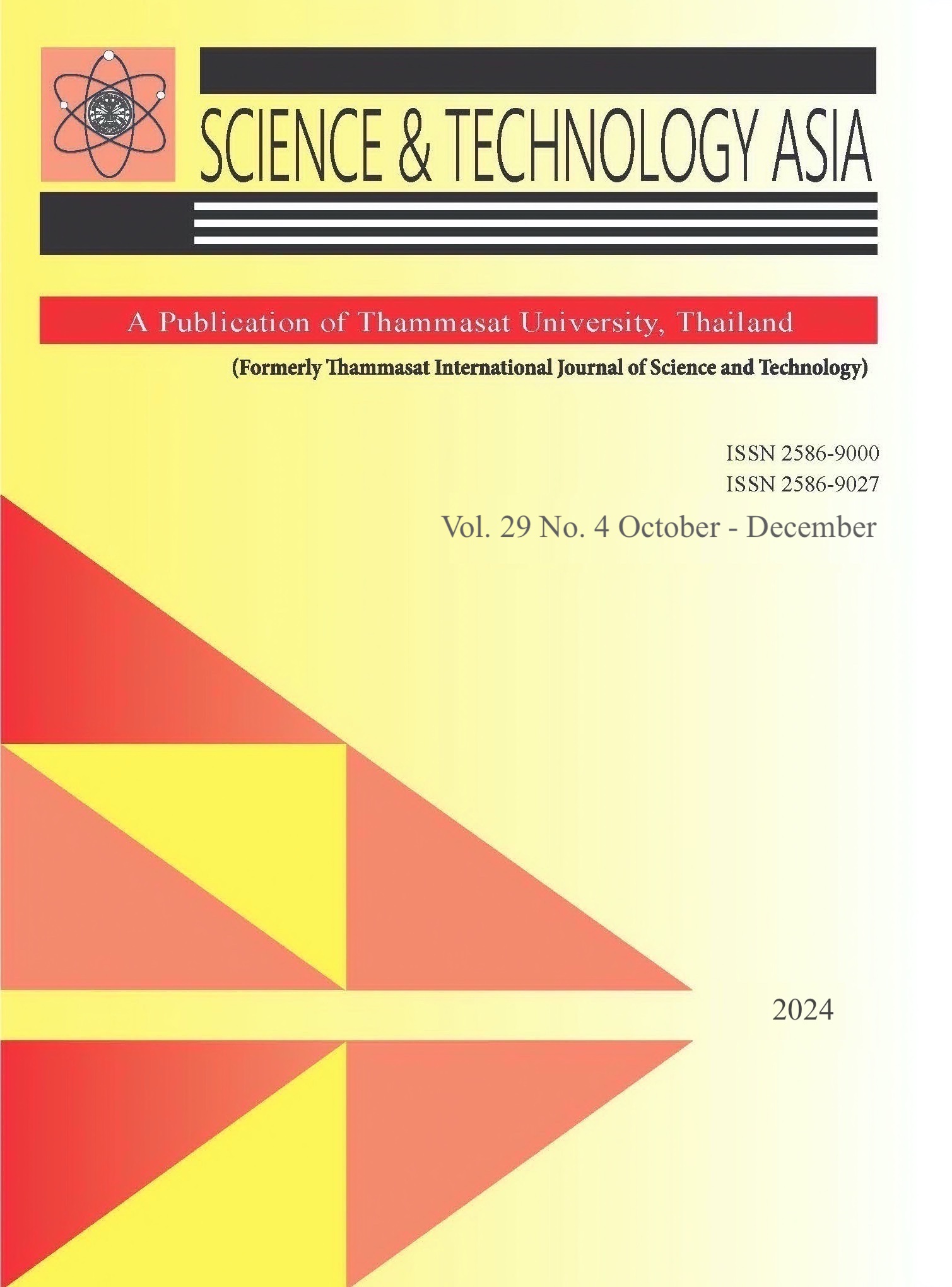Implementation of Particle Swarm Algorithm to Sine-Cosine Optimization: Case Study of Plant-Wide Chemical Processes
Main Article Content
Abstract
The sine-cosine algorithm (SCA) is a population-based optimization approach that relies on mathematical models incorporating sine and cosine functions to effectively obtain the global optimum. The SCA necessitates multiple initial solutions to fluctuate outward and toward the best solution. In this study, the particle swarm algorithm was replaced with randomization and selection of the best fit to enhance SCA operations, resulting in faster convergence and improved accuracy, thereby termed the modified SCA (MSCA). The proposed algorithm's performance was investigated and compared using 7 general problems, 19 common benchmarks, and 5 industrial-scale chemical processes. These benchmarks varied in complexity, with and without constraints. For comparative purposes regarding the algorithm's effectiveness, the results were averaged based on a maximum of 1,000 iterations, utilizing 500 populations from 5 replications. Subsequently, 5 common chemical processes were used to demonstrate the implementation using commercial simulation software (Aspen Plus), seamlessly integrated with both optimization algorithms to adjust operational conditions and design parameters. MSCA produced a lower error percentage and CPU time than SCA.
Article Details

This work is licensed under a Creative Commons Attribution-NonCommercial-NoDerivatives 4.0 International License.
References
Eduardo DG, Michael TK, Thomas FE. Optimization of chemical processes. 2nd ed. McGraw-Hill; 2001.
Manish S, Dhaka V, Poonia RC. Metaheuristics for Communication Protocols: Overview and Conceptual Comparison. Int. J. Adv. Res. Comput. Sci. Softw. Eng. 2014;353-360.
Winyutrakoon O, Rattanapairom S, Petpraphan P, Srinophakun TR. Implementation of Covariance Function to Improve Ant Colony Algorithm for Common Chemical Engineering Optimization. Eng. Sci., 2024:31(1140); 1-9.
Sukpancharoen S, Srinophakun TR, Aungkulanon P. Grey Wolf Optimizer (GWO) with Multi-Objective Optimization for Biodiesel Production from Waste Cooking Oil Using Central Composite Design (CCD). Int. J. Mech. Eng. Robot. Res. 2020:9(8);1219-25.
Seyedali M. SCA: A Sine Cosine Algorithm for solving optimization problems. Knowl.-Based Syst. 2016:96;120-33.
Seyedali M. SCA: A Sine Cosine Algorithm. https://www.mathworks.com/matlabcentr al/fileexchange/54948-sca-a-sine cosinealgorithm. 2023.
James K, Russell E. Particle Swarm Optimization. https://www.cs.tufts.edu/comp/150GA/homeworks/hw3/reading6 %201995%20particle%20swarming.1995.
Mohamed I, Aboul EH, Diego O, et al. ASCA-PSO: Adaptive sine cosine optimization algorithm integrated with particle swarm for pairwise local sequence alignment. Expert Syst. Appl. 2018;99:56-70.
Jamil M, Xin-She Y. A literature survey of benchmark functions for global optimization problems. Int. J. Math. Model. Numer. Optim. 2013:4(2);150-94.
Simge E, Pakize E, Busra O. Solving Constrained Optimization Problems with Sine-Cosine Algorithm. Period. Eng. Nat. Sci. 2017:5(3);378-86.
Papageorgiou LG, Rotstein GE, Continuous-Domain Mathematical Models for Optimal Process Plant Layout. Indust. Eng. Chem. Res. 1998:37(9);3631-9.
Patsiatzis DI, Papageorgiou LG. Optimal multi-floor process plant layout. Comput. Chem. Eng. 2002:26(4);575-83.


